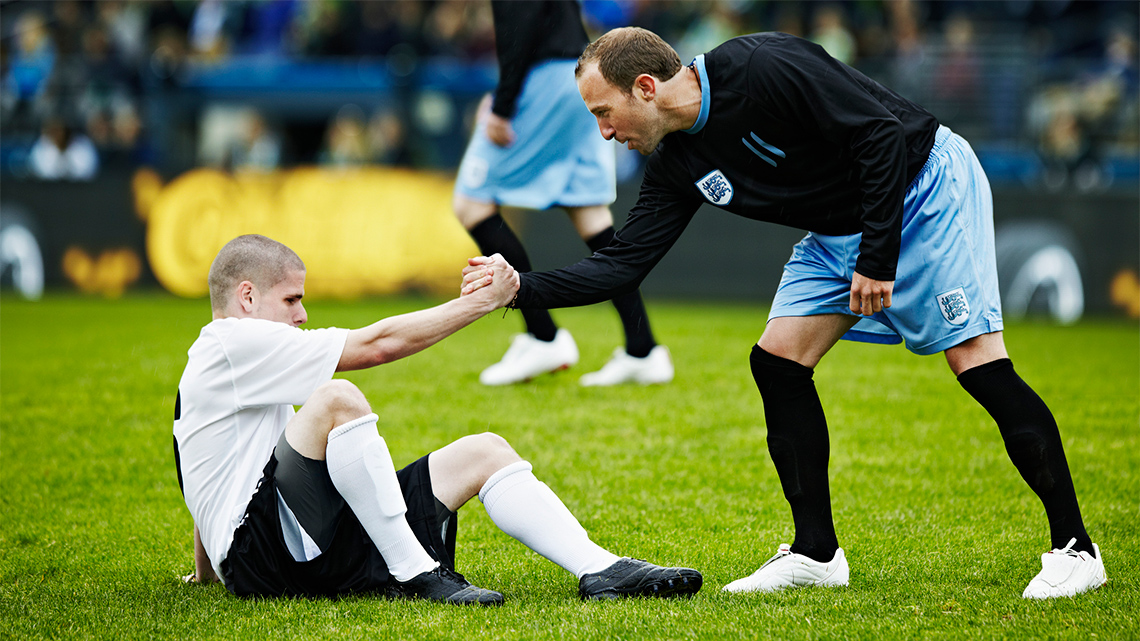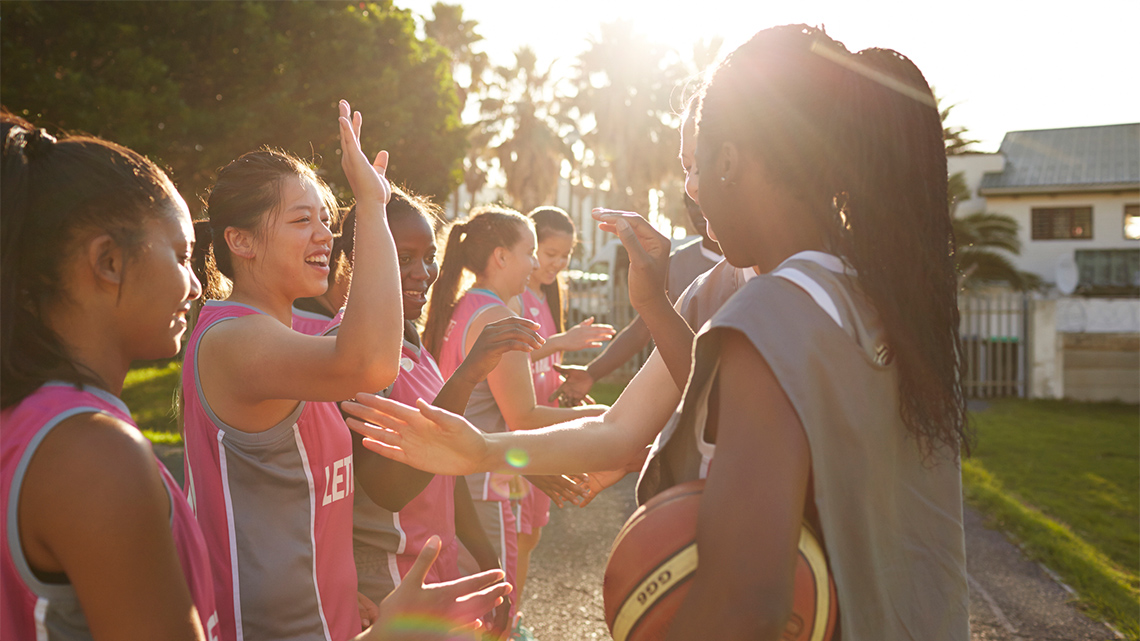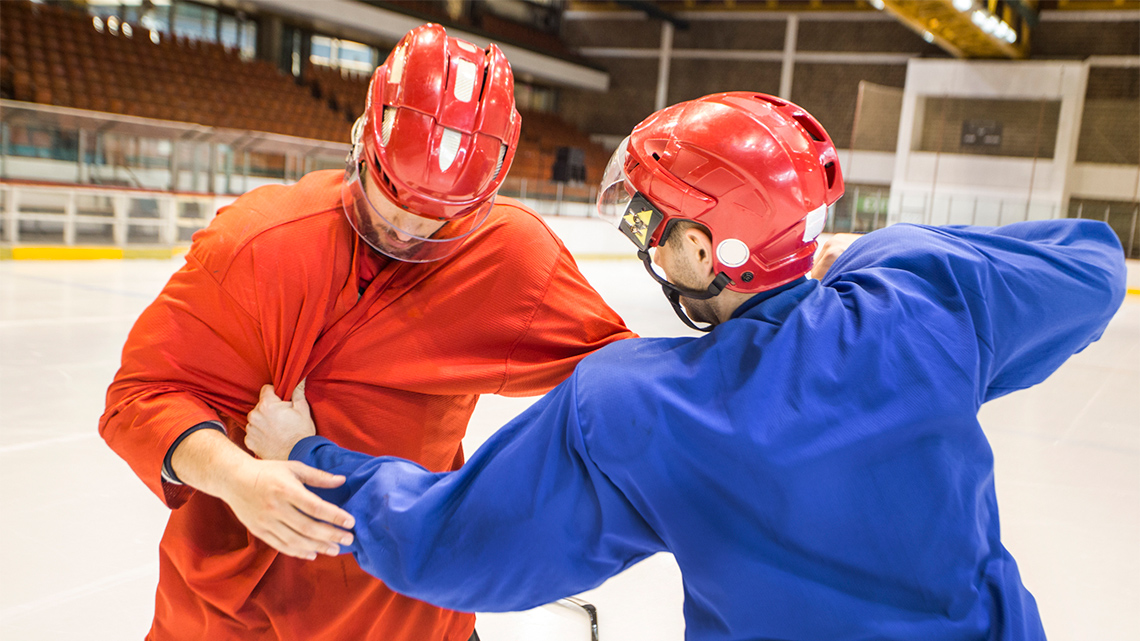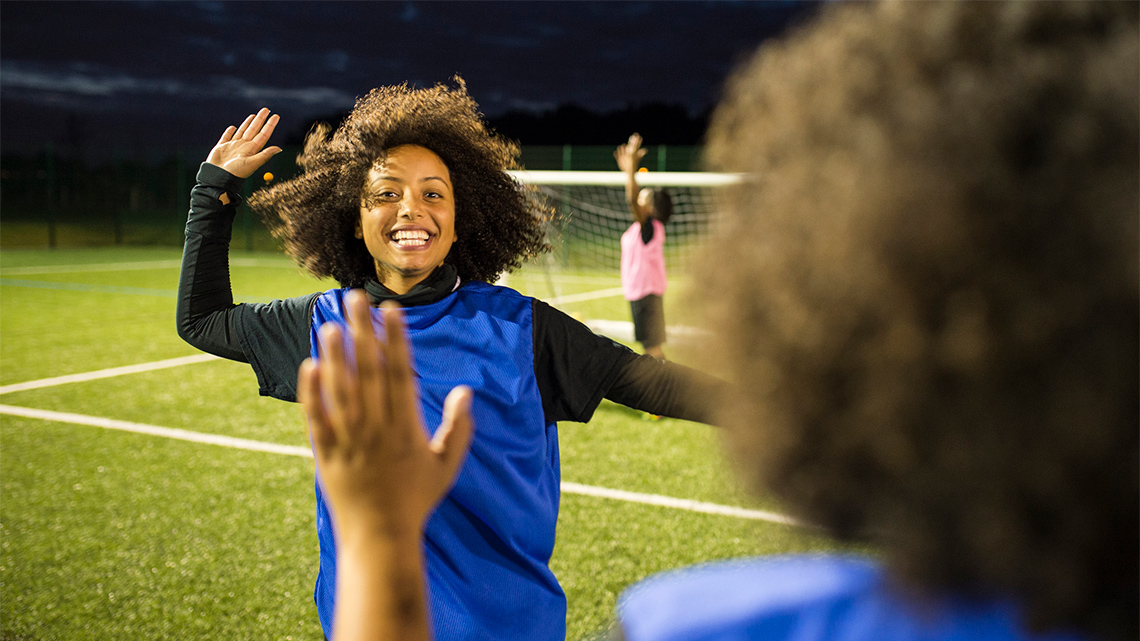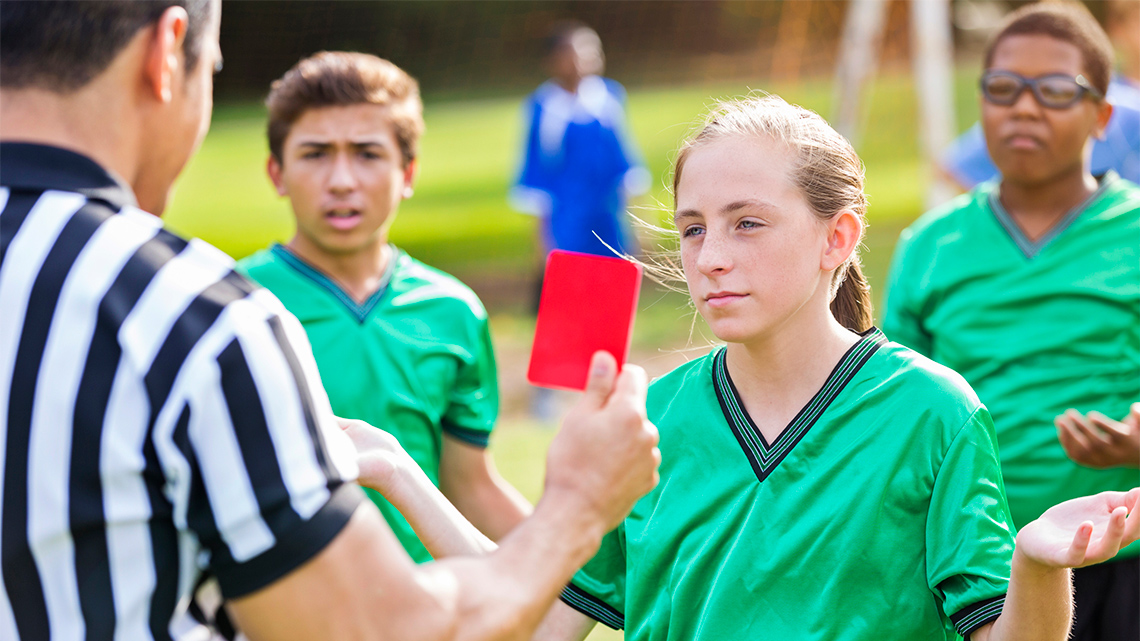Minds On
Physical activities
There are a wide variety of physical activities that people participate in every day.

Brainstorm
Let's brainstorm!
Brainstorm possible physical activities that people can participate in.
Consider physical activities that you may participate in on a daily basis.
Complete the Physical Activities Brainstorm Activity in your notebook or using the following fillable and printable document. If you would like, you can use speech-to-text or audio recording tools to record your thoughts.
Press the ‘Activity’ button to access Physical Activities Brainstorm Activity.

When you're ready, press ‘Let's Check!' to access a few possible answers.

Action
Competition

Today, we will explore competition and good sports etiquette when participating in games and sports.
Competition is a situation where people or teams are trying their best to win a reward or a prize.
For example, in a soccer game, the two teams are competing for the soccer trophy. Another example could be dancers competing to win the Dancer of the Month spot at their dance studio.
Let's begin with a warm up activity!
Always be sure to do your safety checks before you do an activity.
Safety
Before you begin, consider these safety precautions:
Warm Up
Flip a coin
Equipment: a coin (a nickel/dime/quarter/loonie/toonie)
Steps:
First, flip the coin.
If the coin lands on heads, you win. Perform 20 jumping jacks, from a standing or sitting position.
If the coin lands on tails, you do not win. Move to your favourite song for 30 seconds.
Check out how to perform a jumping jack and a seated jumping jack.
Jumping jack

First, stand straight with your feet together and hands by your sides.
Then, jump up, spread your feet and bring both hands together above your head.
Jump again and return to the starting position.
Seated jumping jack

First, sit with back straight, feet together, and hands holding the side of your chair.
Then, stretch your feet outwards, and stretch both hands out and above your head.
Bring your feet and hands together and return to the starting position.
Healthy competition
When you were playing “Flip a coin” for the warm up activity, how did you feel when you won?
What about when you did not win?
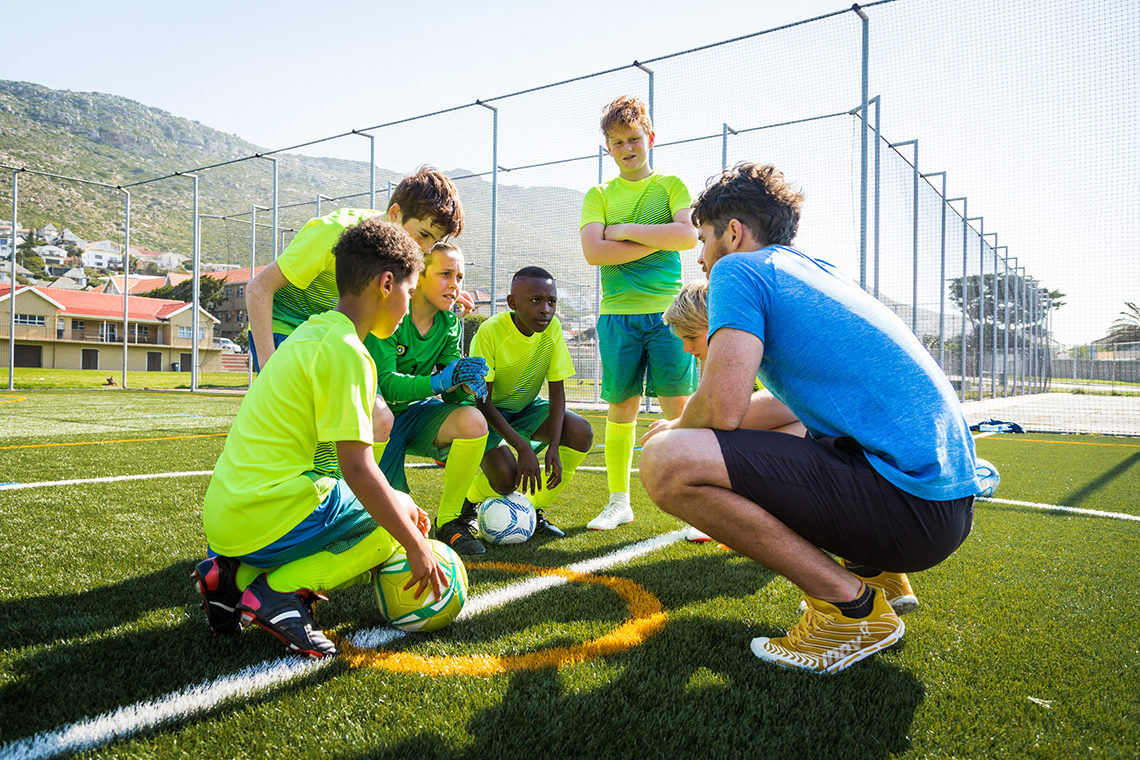
Teamwork
Participating in individual and group physical activities often involve healthy competition.
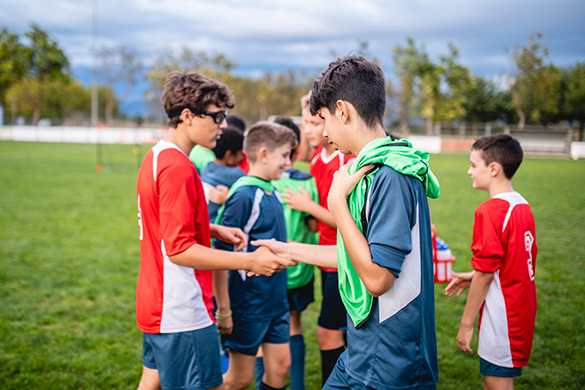
Healthy competition is an interaction where people are doing their best, while respecting and wishing the best for each other. Healthy competitions are opportunities from which we can learn.
For example, taking turns with team members while shooting a basketball, or working together as a team on a group project by dividing the work equally.
Pause and Reflect
Pause and reflect
Reflect on the following questions:
- What does healthy competition look like?
- How does healthy competition connect to active participation?
Record your ideas in a notebook or another method of your choice.
Press ‘Let's Check!' to access possible responses.
Healthy competition includes doing our best and pushing ourselves to play as hard as we can, whether we are competing individually or as a team member.
We can connect healthy competition to active participation by having a goal, which encourages us to be completely involved in an activity.
Etiquette are the rules of correct and polite behaviour during games and sports.
Choose whether each statement is an example of good sports etiquette.
Select the correct answer, then press ‘Check Answer' to see how you did.
Press ‘Let's Check!' to access examples of good sports etiquette.
The following are examples of good sports etiquette, which are important to everyone's enjoyment of a game or a sport:
- Shake hands with opponents after a game.
- Tell the opponents, “Good game,” whether we've won or lost.
- Help an opponent get up who may have fallen over or got hurt.
- Involve all of our teammates in an activity.
- Play within the boundaries and follow the rules.
Good or bad etiquette?
Explore the following images:
After exploring these images, describe the action in each image.
Are these individuals displaying good sports etiquette? Explain why or why not.
Record your ideas in a notebook or another method of your choice.
Game time!

Create a small physical game that involves healthy competition.
This could be similar to a game such as the warm up game, “Flip a coin,” or a partner game such as rock, paper, scissors.
Press ‘Let's Check!' to access possible games.
1. Coin toss: A player flips heads, so they perform an activity that is enjoyable. If they flip tails, they perform an activity that is more challenging.
2. Rock, paper, scissors: This can be played with a partner. Whoever does not win the match has to perform a challenging physical activity.
3. Freeze dance: This can be played with a partner or a group of people. Start the music and stop it every so often. Freeze when the music stops. The player that does not move gets to choose the next song.
As you create your physical game, consider the following questions:
Record your game in a notebook or another method of your choice.
When you are ready, play your game more than once. If possible, share and play your game with a partner.
Remember to perform your safety check before you begin.
Consolidation
Present your ideas

Create your own original media presentation that demonstrates the importance of healthy competition and good sports etiquette.
The media presentation can be a comic strip, video infomercial, poster, or another method of your choice.
Be sure to include the following:
Pause and Reflect
Pause and reflect
Reflect on the following questions:
- Why is it important to demonstrate good sports etiquette?
- How does demonstrating good sports etiquette behaviour affect the way one feels while playing a game?
- How does demonstrating poor sports etiquette behaviour affect how one feels while playing a game?
Record your ideas in a notebook or another method of your choice.
Reflection
As you read the following descriptions, select the one that best describes your current understanding of the learning in this activity. Press the corresponding button once you have made your choice.
I feel…
Now, expand on your ideas by recording your thoughts using a voice recorder, speech-to-text, or writing tool.
When you review your notes on this learning activity later, reflect on whether you would select a different description based on your further review of the material in this learning activity.
